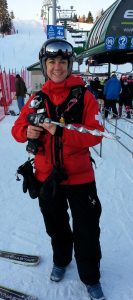
What is it like to volunteer at the ski hills served by the Edmonton Zone of the Canadian Ski Patrol? The zone serves four downhill ski areas, each of which has a unique atmosphere and patrol experience. In all areas, your first priority will be the safety of the skiing public. Members of the CSP are ambassadors for recreational skiing and boarding. In addition to providing first aid coverage, we are the eyes and ears of the resorts we serve. We also spend a lot of time skiing!
In addition to the formal training provided by the Edmonton Zone, each hill provides its own training opportunities throughout the ski season.
Snow Valley
Snow Valley in Edmonton is nestled in the Whitemud Creek ravine system system in central Edmonton.
- Terrain classification: low country
- Vertical: 40 m (130 ft)
- Runs: 8
- Lifts: 4 (2 chairlifts, 2 magic carpets)
Patrol duties include:
- Patroller commitment: one evening per week (from 1745-2130), or one weekend day every two weeks
- Providing first aid and patient extraction services to the skiing public
- Setting up fences and marking hazards on ski runs
- Checking equipment caches (e.g. rescue toboggans)
- Monitoring the slopes (“slopewatch”), and educating the public on skiing/riding safety
- “Sweeping” the public off the slopes after the hill closes
Training opportunities:
- Annual ski improvement sessions with a CSIA Level 4 instructor
- First aid scenarios
Rabbit Hill Snow Resort
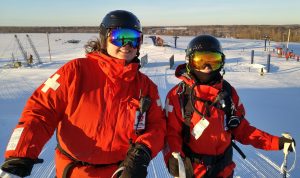
Rabbit Hill is located on the south bank of the North Saskatchewan River close to Devon, approximately 40 km from Edmonton. Rabbit Hill is where new Edmonton Zone patrollers receive their on-hill skiing and toboggan training, in either February or December. The resort is known for having the best terrain park in the Edmonton region.
- Terrain classification: low country
- Vertical: 91 m (299 ft)
- Runs: 11
- Lifts: 8 (1 chairlift, 2 T-bars, 2 magic carpets, 3 rope-tows)
Patrol duties include:
- Patroller commitment: one three hour evening shift per week (from 1745-2130), or one weekend six-hour shift every two weeks
- Providing first aid and patient extraction services to the skiing public
- Assisting paid patrol in setting up fences and marking hazards
- Checking equipment caches (e.g. rescue toboggans)
- “Sweeping” the public off the slopes after the hill closes
Training opportunities:
- Annual ski improvement sessions with a CSIA Level 4 instructor
- First aid scenarios and patient extrication scenarios
- Toboggan training/practice throughout the ski season
Marmot Basin
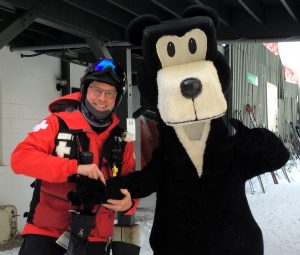
Marmot Basin is located 21 km from Jasper. It has outstanding mountain terrain, ranging from green runs to extreme double black runs.
- Terrain classification: high country (mountain)
- Vertical: 914 m (3,016 ft)
- Runs: 91
- Lifts: 7 (6 chairlifts, 1 magic carpet)
Patrol duties include:
- Patroller commitment: two full days (0745-1630), every other weekend
- Providing first aid and patient extraction services to the skiing public
- Assisting paid patrol in setting up fences and marking hazards
- Checking equipment caches (e.g. rescue toboggans, backboard straps, oxygen etc.)
- “Sweeping” the public off the slopes after the hill closes
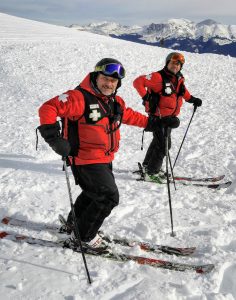
Training opportunities:
- Training scenario sessions with Marmot Basin paid patrol
- Avalanche response training, including beacon searches and probe lines
- Training sessions run by CSP trainers/instructors
Kinosoo Ridge Snow Resort
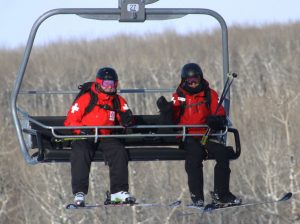
Kinosoo Ridge is located 20 km east of Cold Lake.
- Terrain classification (low-country)
- Vertical: 107 m (353 ft)
- Runs: 13
- Lifts: 5 (2 chairlift, 3 magic carpets)
Patrol duties include:
- Patroller commitment: one three hour evening shift per week, or one weekend six-hour shift every two weeks
- Providing first aid and patient extraction services to the skiing public
- Assisting paid patrol in setting up fences and marking hazards
- Checking equipment caches (e.g. rescue toboggans, backboard straps)
- “Sweeping” the public off the slopes after the hill closes
Training opportunities:
- Shift-specific first aid scenarios and patient extraction scenarios
- Toboggan training/practice throughout the ski season

